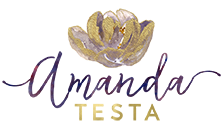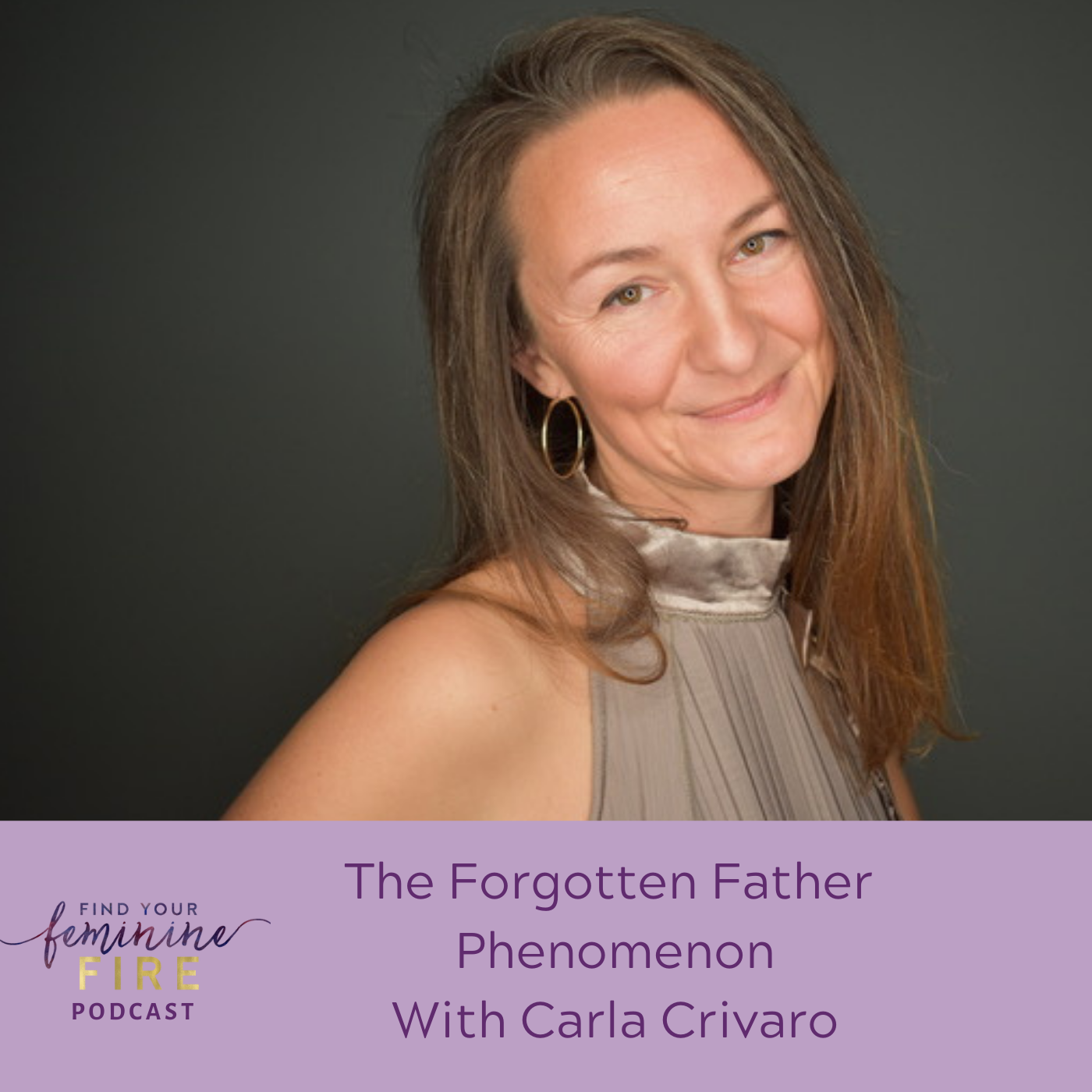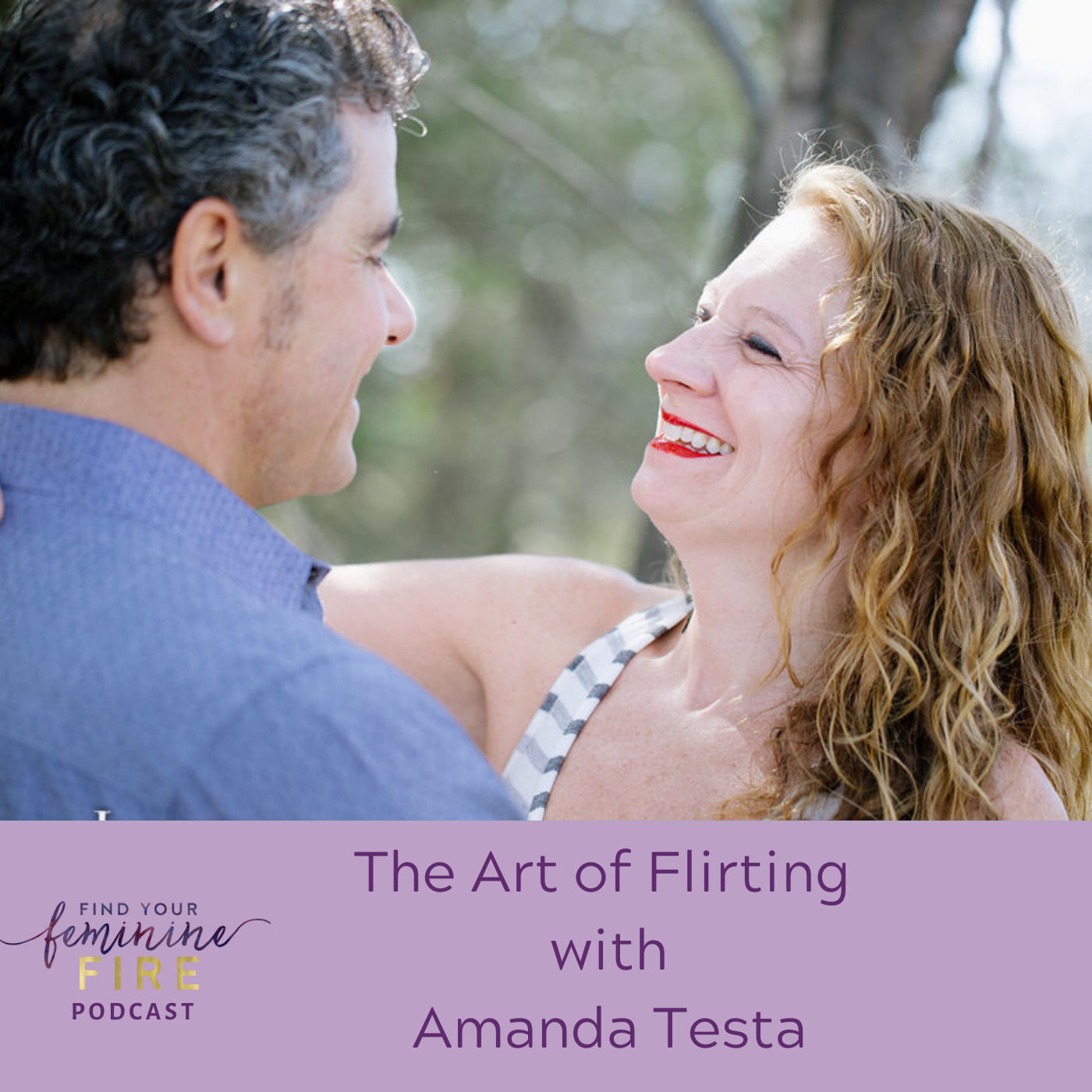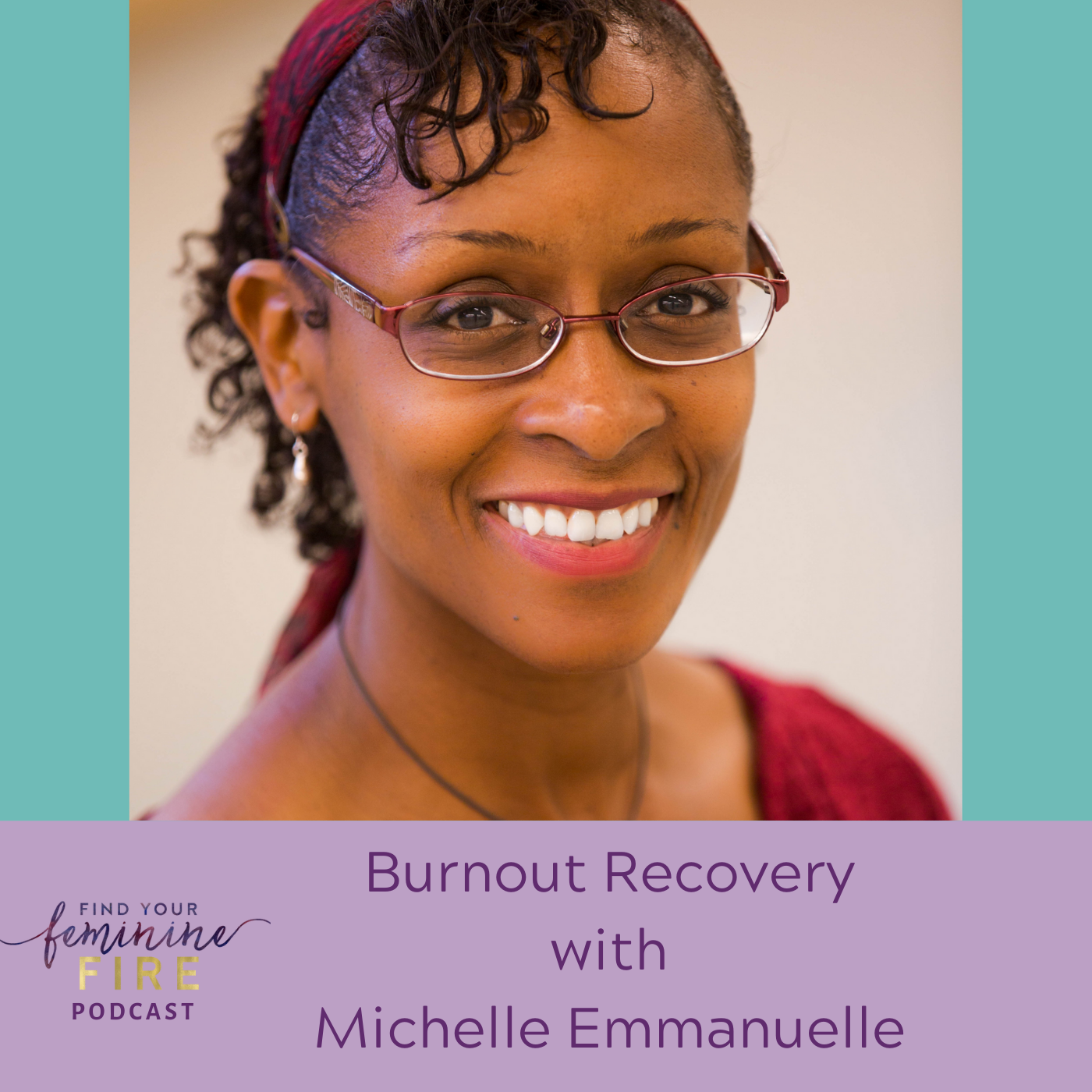The Power Of A Happy Pelvic Floor with The Kegel Queen™ Alyce Adams, RN
Are you looking to solve your pelvic pain or prevent pelvic health problems?
In this week’s pod you’ll discover the mistakes that are killing your vagina and how to optimize your sexual wellness, beat prolapse and stop incontinence with Alyce Adams, RN AKA The Kegel Queen™.
Alyce is a treat – and has such a playful way of approaching what can be embarrassing pelvic floor problems.
One of the facts that I found so fascinating is that millions of women suffer with vaginal prolapse, up to half of all women over fifty years old, and one in five US women will have dangerous surgery to treat this condition. So the good news is, this doesn’t have to happen to you or someone you love. So we’re gonna dive into all this today.
Listen below, or tune in via: Apple Podcasts,Stitcher or Spotify.
(full transcript below)
In this episode you’ll discover
What to do if you find yourself “sneeze peeing” or suffering from other signs of incontinence.What to look out for if you think you may have prolapse, and ways to take ownership of your pelvic health.Why 99.9% of people do kegels wrong, and what works and what doesn’t when it comes to Kegeling.Understanding what prolapse is, and the non surgical options that are available. The fun sex benefits of doing proper Kegels.The “movie star” trick for a perfect kegel.Alyce shares her special “fire it up” move to enhance pleasure sensations.What devices to avoid using.and much more!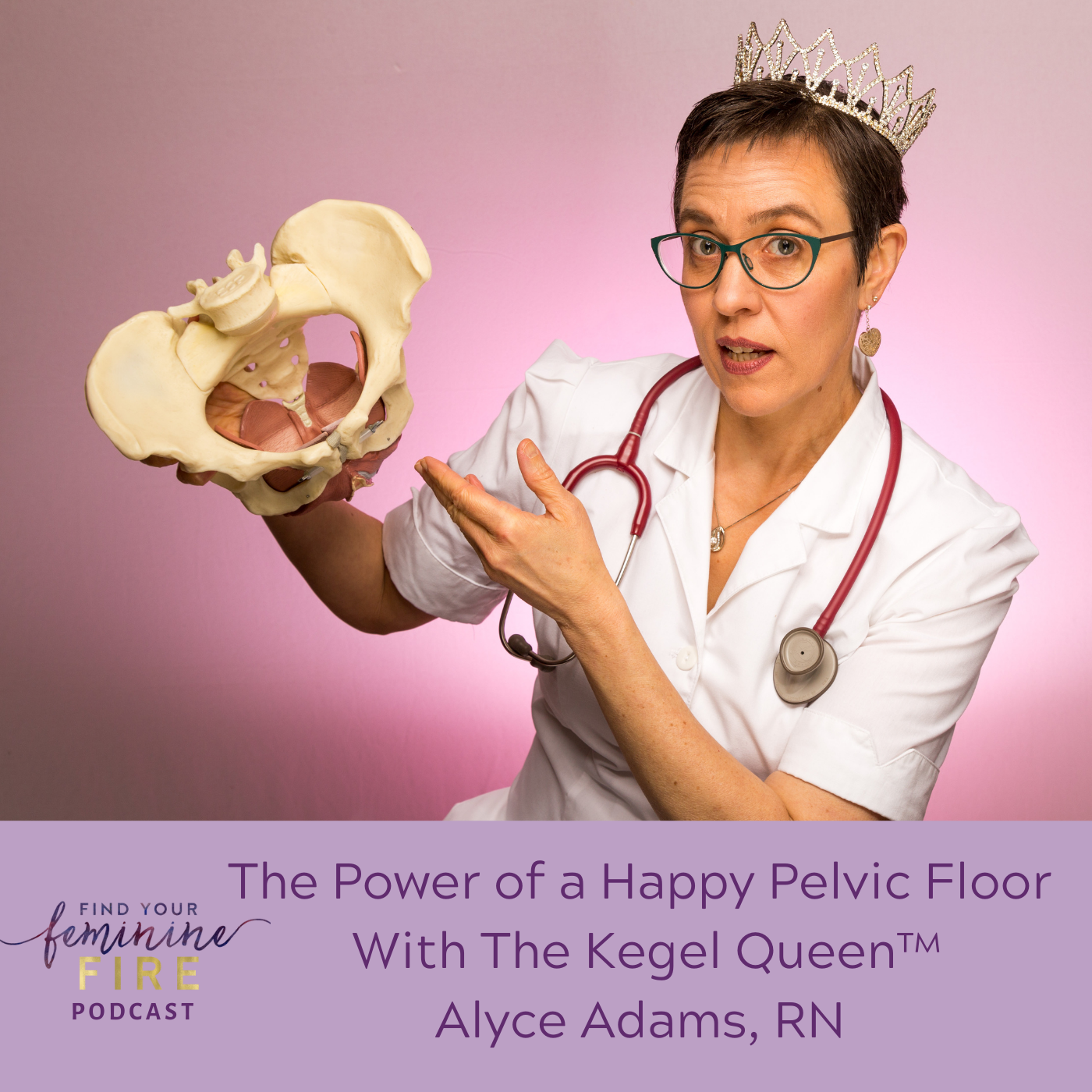
JOIN IN THE DISCUSSION ON THIS EPISODE AND MORE IN MY FREE FACEBOOK GROUP, FIND YOUR FEMININE FIRE HERE.
Alyce Adams, RN, is an international expert in kegel exercises for women and she’s helped thousands of women all over the world heal from pelvic organ problems such as prolapse, urinary incontinence, and much more.
After she became a mom, she suffered with saggy prolapse symptoms, leaking pee, and disappointing sex.
Then, through a year of medical and scientific research, she uncovered the kegel secrets that completely solved those problems for her (and made her husband a very happy man).
Today, her mission is to expose the kegel exercise myths most women believe so they, too, can discover Real Kegels That Really Work™.
She’s already helped women in 19 countries around the world enjoy the life-changing benefits of the Kegel Queen Program: no diapers, no surgery, and mind-blowing sex.
If you’ve been interested in learning more about coaching with Amanda, I’m now booking coaching clients for 1-1 support in creating the relationship and orgasmic pleasure of their dreams. If’ you’ve been thinking about it, maybe we should talk! Link here to book a free call to see if we’re a fit.
EPISODE 212: with Alyce Adams, AKA the Kegel Queen™
[Fun, Empowering Music]
Amanda Testa: Hello, and welcome to the Find Your Feminine Fire podcast. I am your host, Amanda Testa. I am a sex, love, and relationship coach, and in this podcast, my guests and I talk sex, love, and relationships, and everything that lights you up from the inside out. Welcome!
Here’s a question for you: are you looking to solve you pelvic pain or prevent pelvic health problems because one of the key things that we are gonna talk about today is avoiding the mistakes that are killing your vagina and how to optimize your sexual wellness. So kick back and relax as we dive in with a very special guest today. I’m so excited because I am welcoming Alyce Adams who is a registered nurse AKA The Kegel Queen, and we’re gonna drop into what to do around your pelvic health.
One of the facts that I found so fascinating is that millions of women suffer with vaginal prolapse, up to half of all women over fifty years old, and one in five US women will have dangerous surgery to treat this condition. So the good news is, this doesn’t have to happen to you or someone you love. So we’re gonna dive into all this today.
0:01:15
Welcome, Alyce, thank you so much for being here today!
Kegel Queen: Thank you, Amanda! I am super excited to help women get their feminine fire cranked up.
Amanda Testa: Yes, I love it! I think we both share that big passion for trying to do things in ways that are safe and simple and healthy without having to resort to surgery or drugs or all the things. Granted, we are in a beautiful society where things are there when we need them, but often, we don’t, but we just aren’t educated to know what our options are. So that’s why I feel like this is so important to talk about.
Kegel Queen: Yes. Yes, and I think, to that point, if you kind of look at the two opposing polls of how conventional medicine can work or not work for us — if you have a broken leg it’s really great to be able to get it set, get the proper cast, maybe you need pins or something.
0:02:10
On the flip side, if there’s something that you could be doing for yourself such as avoiding pelvic surgery by doing Kegels (and some other things that we could talk about if you’d like), there’s this tremendous feeling of power when you do it yourself. I think that there are physical risks, of course, with surgery, but I think that the psychological side of, “Something’s wrong with me, therefore, I need to be unconscious, lie down, and have an expert with years of our pain knowledge I could never begin to duplicate — have that person do something physical to me,” it’s a really, really different psychological and emotional outcome than if you say, “Okay, this is going on with me. What am I going to do for myself? How can I lift myself up? How can I do this awake and on my feet?” So yeah, not just the physical risk of surgery, I think, is a really important piece of this.
0:03:26
Amanda Testa: Yes, and I’m wondering, too, because I want to dive into more around what are some signs of pelvic distress, what people need to look out for, but also, I’d love just to start with you sharing a little bit of your story and why this is such a passion for you, if you don’t mind.
Kegel Queen: Absolutely.
Amanda Testa: Well, like so many people who become well-informed about various topics, it’s because I had some problems that I needed to solve.
Kegel Queen: [Laughs] I have one child. I have a beautiful daughter who’s almost 18 years old now, and she’s just the greatest thing ever. Being pregnant was not the greatest thing ever, and I began my pregnancy by vomiting for about two months straight. By the end of that time, every time I threw up, I would pee wherever I was.
Amanda Testa: Mm-hmm.
0:04:30
Kegel Queen: For me, not even so much carrying a big heavy baby or giving birth, but to me it was this vomiting that really blew out my pelvic floor.
Amanda Testa: Mm-hmm.
Kegel Queen: After she was born, I had, not just the sneeze-pee — fortunately, I didn’t have a vomiting-pee [Laughs] because I wasn’t throwing up, but I had sneeze-pee. I had symptoms that I didn’t even know were signs of bladder prolapse.
I felt like every time I took a step it was like there was a bowling ball kind of lunging down between my legs. I had this kinda “gotta pee” sensation. Anytime my bladder wasn’t totally empty, if I took a walk or something or if, heaven forbid, I should try to run or jump or something like that — and I had problems with sex. I knew that intercourse didn’t have the same level of sensation that it had before.
0:05:35
Then, after some period of time, my husband told me that it didn’t have the same level of sensation for him, and it was such an emotional gut-punch for me to wonder if I was ever going to be the woman I had been before. If this conversation happened with a friend and I was offering someone comfort, I wouldn’t say to her, “You’re damaged goods, baby,” but that’s how I felt.
In that moment, I felt like holy cow, this really important part of me, this really important part of my body, and this really important part of my relationship, and this really important part of my spiritual life and just enjoying my body and my sexuality had changed.
Amanda Testa: Yeah.
0:06:35
Kegel Queen: That’s what really pushed me to take action. So I decided okay, I think Kegels are supposed to be good for that. Let’s figure out how you do ’em, ’cause I’d heard some things, like we all have, but I never really looked into it. I looked all around the internet. I talked to friends, nurses, and everything I found was garbage. It was like a paragraph or a couple paragraphs, maybe, and there was one thing that said this, another thing said that. There was nothing consistent. There was nothing that seemed like it had any teeth to it whatsoever. So I thought okay, I’m a nurse, I’m kind of a nerd, and I’m gonna go figure this out.
0:07:24
So I spent a year — I would drop my daughter (she was in preschool at the time) off at preschool and then walk down the road right there to the medical library at The University of Rochester. It’s a very prestigious medical school there, and I just parked in the library reading research for months and months and months, and I pulled out all the stuff that works. I looked at, like, what are the ways to do Kegels that actually have been shown to work, and I compiled all the good stuff into a program that I could do as a busy mom without burning tons of time and brain power and bandwidth on it.
Amanda Testa: Mm-hmm.
0:08:11
Kegel Queen: I started doing this program. In the beginning, I could do very, very little, but after about two months — almost exactly at two months, it was like everything changed. I felt strong. It was like overnight, all of a sudden, I had no more sneeze-pee, I had no more of the saggy sensations that I found out, only in doing my research, were indications of prolapse, and that was gone, and sex totally changed. I remember one specific incident where it was like oh, gosh, this seems really different. Is this different for you? Yes, it is.
Amanda Testa: [Laughs]
Kegel Queen: That was a very happy day. So i t seemed really evident that this is a thing to share and this is something a lot of women could benefit from, and I taught a class in my living room to some friends and then started teaching.
0:09:19
One of the surprises that happened was in the beginning, I was really talking a lot about incontinence because there’s so much research about incontinence. There’s research about prolapse, and there’s certainly enough research to go on, but it’s so much less. So I was really talking mostly to people about incontinence, and the first time somebody came into my program and said, “I had a surgery date, and I canceled it because I found you,” the first time that happened it was like, [Deep breath in] “Maybe you shouldn’t be doing that! Are you sure that’s okay?” Then as time went on, I began to understand that that was really a great thing, and now that’s my favorite thing when women come into the program and they say, “I canceled my surgery because I found this.” Because surgery may have a place, but where doctors put surgery for prolapse — and we should probably talk about what prolapse is in a sec —
Amanda Testa: Yes, yes.
0:10:21
Kegel Queen: Some might be wondering, but if a woman goes to the doctor, and she has prolapse, generally speaking, unless she has a real outlier doctor, they say, “Let’s do surgery,” or, “Let’s wait ’til it gets worse, and then do surgery,” and that’s it. That’s the end of the conversation where surgery may have a place, but it should never be the first line treatment, and it should never be the only treatment that’s recommended.
So that’s the thing that I really want to shout from the rooftops the most is anybody who has vaginal prolapse, don’t think surgery is the only thing that is possible for you.
Amanda Testa: Yes, I love that, and just to back it up for a moment, maybe could you share a couple of the signs of prolapse or what that means for those who might not know?
0:11:21
Kegel Queen: Yes. Yeah, so when we’re talking about vaginal prolapse or pelvic organ prolapse, the word “prolapse” just means that something in the body has shifted out of its proper position, and there are other kinds of prolapse. What we’re talking about is vaginal prolapse or pelvic organ prolapse, meaning the uterus or the bladder or the rectum has slipped out of its proper position, and in the case of the uterus, it means the uterus is lower down in the vagina. Like if you go in with your fingers, you’d hit your cervix lower than you used to. With the bladder or rectum, that means there’s a bulge in either the front or back wall of the vagina (depending on which organ that is). There’s a bulge covered by the vaginal wall. It’s that organ literally kind of hanging into the vagina. When it’s severe, any of those organs can actually protrude out the vaginal opening, and sometimes it happens suddenly.
0:12:23
Sometimes it happens in stages. It’s not fun, and it’s definitely something that needs attention. It needs a proper medical diagnosis so that you’re sure what’s going on, but before you just say, “Yeah, sure, surgery,” there are other options.
So the bulge or the low cervix is the thing, and that can come along, and that’s often accompanied by, people describe, like, a sagging or dragging sensation, I feel like I’m sitting on an orange, sometimes discomfort or aching. Pain, though, not really. Sometimes, if it’s the rectum, maybe you have difficulty moving your bowels. If it’s your bladder, maybe you have difficulty emptying your bladder. Usually, not pain though. Pain would be, generally, an indication that something else is going on.
0:13:23
Amanda Testa: Yeah, and so, once you kind of understand or have been diagnosed with prolapse, then let’s talk about why Kegels.
Kegel Queen: Sure.
Amanda Testa: Then, also, I’d love for you to share, too, why most people do them wrong. [Laughs]
Kegel Queen: [Laughs] Yes. So yeah, I’ll just say, about doing Kegels wrong, it’s amazing to me how many people talk about Kegels and how wrong they are. Holy cow, it’s mind-blowing, really, and what else are we so wrong about that we don’t even realize?
So how Kegels can help is a couple of ways. So we’re in just audio right now so you can’t see my hand gestures, and you can see my little pelvic model here, but imagine that your pelvic floor — your pelvic floor is the bowl of muscle and connective tissue. Those are the muscles you’re working when you do Kegel exercises.
0:14:30
So the pelvic floor is a bowl of muscle and connective tissue, and these are the muscles you’re exercising when you do Kegel exercises. If you could picture the pelvic floor as a bowl — literally, it’s a half a sphere. Just to totally over-simplify, it’s a bowl, and your pelvic organs are supported from behind and below by this bowl (the pelvic floor), and then from the top and the sides by ligaments. So when the pelvic floor is too lax, it’s too saggy, part of the support for your pelvic organs is not there. Also, when there’s a gap in the pelvic floor (called the urogenital hiatus), it’s normal, healthy, meant to be there. It’s the gap in the muscle where the vagina and the urethra pass through, if that gap is enlarged, this can — when your organs prolapse, they’re literally falling through that gap.
0:15:35
So you need a couple ingredients for prolapse. One is (well, really, either one) either the ligaments aren’t doing their job properly or the pelvic floor isn’t doing its job properly or both. We can’t do much about the ligaments. The pelvic floor, though, is muscles we can exercise and change. So when you do Kegels correctly (not if you do them wrong, but only if you do them correctly), you are building tone in the pelvic floor, you’re making the pelvic floor more firm, you’re making it thicker, and it’s sitting higher up in the pelvis. So if you’re imagining this hammock that supports your organs, then think of that hammock getting thicker and more firm and higher up. Those things all translate to better support.
0:16:27
The other piece is when you do Kegels correctly, the urogenital hiatus actually becomes smaller so there’s a smaller gap in the muscle through which the organs can fall. Incidentally, there are many sex benefits of Kegels, and that’s one of them. The pelvic floor is what gives the vagina its structure, and if the urogenital hiatus is large, that means there’s not as much vaginal tone so by doing Kegels properly, thickening and firming the pelvic floor and decreasing the size of the urogenital hiatus, your vagina becomes more firm and tight.
So we could definitely talk more about sex, and you probably want to. Just a wild guess.
Amanda Testa: Yes.
Kegel Queen: [Laughs]
Amanda Testa: Yeah, and can I back you up one second?
Kegel Queen: Yeah, sure.
Amanda Testa: This just makes me think of something too that I think is a fallacy, that I just want you to address really quick too as we fully move into that.
Kegel Queen: Sure.
0:17:37
Amanda Testa: Number one, I love how you are talking about the vaginal tone, right? ‘Cause we want that tone, but we don’t want it too tight, right?
Kegel Queen: Exactly. Yeah.
Amanda Testa: Because people will always be like — you know, there’s that horrible surgery where they sew the opening of the vagina a little tighter —
Kegel Queen: Oh, gosh.
Amanda Testa: — you know?
Kegel Queen: Yeah, yeah, yeah.
Amanda Testa: Whatever they call it. The “mommy stitch.” I don’t know what they call it.
Kegel Queen: Well, yeah, there are a lot of names for that.
Amanda Testa: And no offense if that’s happened to you — what is it called?
Kegel Queen: I think they call it, sometimes, the “daddy stitch.”
Amanda Testa: Oh, yeah, but…
Kegel Queen: Yeah.
Amanda Testa: That’s got so many problems already, and also no offense if that’s happened or if you’ve chosen that, but I’ve had a lot of clients that have had a lot of trouble with that.
Kegel Queen: Mm.
Amanda Testa: But also, you don’t want it tight, you want it toned. Maybe speak to that really quick.
0:18:19
Kegel Queen: Right. Yeah, so a well-functioning muscle is not one that’s rock hard and contracted all the time. A healthy, functioning muscle is supple and stretchy and toned and firm. I always say, think about cats. If you’ve ever been petting a cat and you kind of dig in under the fur, along their spine you can feel their muscles, and they’re not rock hard. They’re squishy, but cats are strong. They are seriously strong. They can jump up on top of your counter, maybe the fridge even. You know, they’re powerful, strong animals, and they’re not tight and clenched. A tight, clenched muscle actually is weaker than a stretchy, supple muscle.
Yes, a too tight pelvic floor is a huge problem, and that’s one of the outcomes you can have of doing Kegels incorrectly. There are a lot of ways to do Kegels wrong and a lot of ways they don’t work. When you do them correctly, you shouldn’t have risk for anything, but when you do them wrong, you are at risk for over-tightening, and it’s a huge problem.
Amanda Testa: Yes.
0:19:36
Kegel Queen: Amanda, you asked about why so many people do Kegels wrong, and, honestly, it’s kind of a big mystery to me why there’s so much misinformation. Maybe it’s just because it’s about vaginas and people tend to — their brain shorts out when you say the word “vagina” or something. I don’t know.
Amanda Testa: I love how you say that people’s brains sometimes just — you know, when it comes to the vagina, it’s an important thing but, sadly, in our culture, it doesn’t get as much respect and talked about as it should. So I do feel like yeah, that’s probably one of the reasons, but I’m curious also, too, perhaps, just the lack of being taught. You know, I think when I had my daughter, the midwives are really good because they actually worked with me, internally, to ensure that I was doing it properly, which I don’t think probably happens for many people. So yeah.
0:20:35
Kegel Queen: Right, well, and the thing is, too, even if you’re moving the muscles correctly, there are so many other pieces to doing Kegels correctly.
Amanda Testa: Right.
Kegel Queen: Like, you could be moving your muscles correctly and totally end up with an over-tightened pelvic floor because you’re doing too many or holding too long.
Amanda Testa: Yes.
Kegel Queen: I think, too (I’m not gonna name names), there’s a particular school of childbirth education that has spread a lot of kind of bad Kegel information. I think that’s one reason elevator Kegels — I’ve looked, specifically, in the research for elevator Kegels by any name and that’s the thing that’s taught commonly in childbirth class where you start at the bottom, you slowly and gradually tighten to the top, whatever that exactly means, then you slowly and gradually let it go.
0:21:37
Maybe that kind of thing could be potentially useful during sex, but any way of controlling your muscles and playing with them could be potentially beneficial for sex, but for therapeutic Kegels that are going to address pelvic floor problems like incontinence and prolapse, there is absolutely no research support for elevator Kegels. This is just one example.
Amanda Testa: Yes, and I’m wondering, too, what are some of the things you might be doing. If you think you’re doing your Kegels, what might you be doing wrong? [Laughs]
Kegel Queen: Well, let’s talk about the one perfect Kegel. Is this a good time to get into that?
Amanda Testa: Yes, I love that! Yes, please.
Kegel Queen: So the best way to convey how to do one really, really good Kegel is with what I call the movie star exercise. So you do it with me, Amanda. Listeners, please join in.
Amanda Testa: Yes, I will join.
0:22:44
Kegel Queen: So close your eyes and take a minute to think of your favorite movie star. This is somebody you’d really like to impress. I, generally, like to think of Denzel Washington at about age 40. [Laughs]
Amanda Testa: [Laughs]
Kegel Queen: So eyes closed. You and Denzel or whoever are having dinner. You’re in a quiet restaurant at an intimate table for two off in the corner. You’re having a nice conversation, and this special person is right in the middle of telling you a revealing personal story. He or she is really opening up. It’s an amazing moment, and all of a sudden you are struck with a sudden overpowering urge to pee and pass gas at the exact same time. So hold it in. Hold it in right now and give it everything you’ve got. You cannot ruin this moment. Squeeze as hard as you can and hold that squeeze. Now, relax those muscles completely. That’s one good Kegel.
0:24:04
So just try that motion a couple times, and the relaxation, and make sure you end with fully, consciously relaxing the muscles. There are four pieces of that that are really, really important. First, you’re squeezing the entire pelvic floor. The exercise was not you think you’re gonna pee while you’re having dinner with Denzel; the exercise is you think you’re gonna pee and pass gas at the same time. The pelvic floor, the biggest muscles of the pelvic floor are called the levator ani muscles. That means, in Latin, “lifts the anus.” So if you’re practicing by stopping your stream of urine — which, by the way, is fine to do but never, ever any more than once a week ever — but if you’re practicing by trying to stop your stream of urine and you’re not also engaging the muscles around your anus, you’re missing the boat. You’ve got to work your entire pelvic floor.
0:25:10
Another piece is maximum intensity squeezing, maximum intensity contraction. If you’re doing one, two, three, four, like that kind of kind of pulsing Kegels that many women are taught to do, like, do 200 Kegels a day and they’re gonna be like that, you’re missing the boat. You need to do a high, maximum-intensity squeeze in order to engage the type two muscle fibers that are the ones you’re working on developing to get the results that you want. Again, doing Kegels just for sex is different, and we can talk about that.
Third, you’re holding that contraction. It’s not just like one, two, three. Well, the problem with those one, two, three little ones, it’s not maximum intensity and it’s brief, so you want to do both a strong hold and a sustained hold, and then finally relaxing completely. It’s absolutely vital that you begin and end your Kegel practice and follow every Kegel contraction with conscious, complete relaxation because having over-tight pelvic floor muscles, not only do they not work as well, but you can end up with muscle spasms that are really painful, you can end up with pain with intercourse.
0:26:38
It’s not good. So it’s absolutely essential to prevent that over-tightening of the muscles, and we do that by using correct Kegel technique including conscious, deliberate, strong relaxation.
Amanda Testa: Beautiful.
Kegel Queen: So that’s one, and there are so many Kegel myths that that come up against — like Kegel devices. The whole red-light thing is another one that just drives me nuts. If you’re doing Kegels whenever you get to a red light or whenever you’re waiting in line (which is advice given out by many people including health professionals who ought to know better), you’re not gonna do them. The whole scheduling thing is key. You can’t just kind of whenever and whenever an opportunity comes up I’m gonna do it.
0:27:33
Well, think about if you approached cleaning your house that way or the activities you do for making a living. Well, when an opportunity comes up, I’ll do it. You’re not gonna do it! [Laughs]
Amanda Testa: [Laughs] Yes, so you were saying the four keys — okay, number one is squeezing the entire pelvic floor, making sure that you use maximum intensity, holding the contraction, and remind me, what did you say the fourth one was? Is that the timing?
Kegel Queen: Relaxing.
Amanda Testa: Oh, relaxing. Relaxing, yes.
Kegel Queen: This is why you don’t want to do Kegels while you’re driving.
Amanda Testa: That makes sense.
Kegel Queen: Because if you’re multitasking at all, you are not fully able to relax, and that is key. I cannot stress that enough.
Amanda Testa: I love that ’cause I did think I heard that too. Yeah, every time you’re at a stop light — yes, I did hear that.
Kegel Queen: Yeah.
Amanda Testa: And so, I’m wondering — obviously, you have your Kegels for prolapse, right?
Kegel Queen: Mm-hmm.
0:28:38
Amanda Testa: And then I know you also mentioned there’s other Kegels or just in the benefits of certain types of Kegels for sexual pleasure or for sex, and so, I wonder if you might share a few tips around that if you don’t mind.
Kegel Queen: Absolutely. Absolutely! It would be my pleasure to do so. So therapeutic Kegels would be what’s good for prolapse, for urinary incontinence, and for certain sex benefits. So therapeutic Kegels meaning a specific way, like, we just did that one particular way of using the pelvic floor. What that kind of Kegels can do for you sexually we’ll talk about, and I want to also talk about some other things you can do with your pelvic floor for sex.
So therapeutic Kegels can benefit your sexual function and pleasure. Number one, we talked about what it can do for the structure of the vagina. We already talked about that.
0:29:37
The other thing that’s so powerful is that when you’re doing therapeutic Kegels and the pelvic floor is thicker and more firm and accustomed to exercise, that means the pelvic floor is getting more and better circulation, not just while you’re exercising but all the time. Just like any muscle in the body. If I work out and my biceps get bigger, they’re getting more blood flow. Healthy circulation is one of the major, major keys — as you know well, Amanda — one of the major, major keys of healthy sexual function is having healthy circulation. Good circulation is an essential part of arousal and lubrication and orgasm. It is key.
0:30:32
So that’s one piece, and then the other piece is you can simply enjoy the sensations of your pelvic floor contracting and relaxing while you’re engaged in sexual behavior of any kind. My favorite pelvic floor trick I call the “fire-it-up” move, and that is those little brief little pulsing Kegel contractions to maybe, like, I’m not necessarily in the mood, but I’d like to be, this can help. So while those little pulsing contractions aren’t going to do much for changing the structure of your pelvic floor — maybe structure’s not the right word, but changing the thickness and firmness and so forth, those little pulsing contractions aren’t gonna do much for that, but they will bring circulation in the moment. They will bring your attention to the pelvic floor.
0:31:36
Another thing, because your pelvic floor is part of your sexual anatomy (we didn’t even really get into this either), but your pelvic floor is right there where your genitals are. It’s, like, right there. We’ve already talked about vaginal structure. Another piece is there is a pair of little muscles, called the bulbocavernosus muscles, that are literally attached to the clitoris. So I call it the amazing clitoris trick, that if you can learn to control those muscles — and it’s not fancy, it doesn’t have to be only those muscles or whatever, but your entire pelvic floor includes them — but if you get good at using those muscles, you can actually move your clitoris back and forth, and that’s toward and away from your nose, not side to side. If you can imagine what that could do for the level of stimulation you’re receiving in various situations, that’s a really powerful thing to do.
0:32:46
Then simply just playing with the sensation of deliberately contracting or deliberately relaxing the pelvic floor during sex. Try it with high intensity. Try it with low intensity. Try it with little pulses. Try it for a sustained time. You can’t do it wrong if it’s just for fun, so just try it! Once you gain control, you may already have control of your pelvic floor, at least somewhat, and by just deliberately engaging that control, those sex benefits are things you could start having today. You’re not going to have the sex benefits of 24/7 better circulation and firmer muscles and all that today. That takes weeks, but you may be able to have a better time the very next time you have sex simply by engaging the muscles with consciousness.
0:33:51
Amanda Testa: I think it’s such a key thing to bring awareness and consciousness to because, often, we don’t think about this area, you know? I think it’s like anything. I’ve mentioned this before on the podcast, but I do feel like we’re very good at segmenting things in our lives just because that’s what we’ve been taught, but yeah, we are holistic beings. All these parts of us are always here, always doing their thing whether we pay attention to them or not, so when we bring our awareness and our attention to things it really changes the consciousness. Like you say, you’re aware. You can tune in a little more and be aware of what you’re noticing.
0:34:30
Kegel Queen: Yes, absolutely. This is something that I really notice with women in my program. Women come in with a whole range of relationships with this part of the body, and I’m thinking of one woman who was an early member of my program years ago, (one of the first) and she told me, “I’m in my sixties,” she says, “And I’ve never put my fingers in my vagina before.” I’ve had another woman I’m thinking of who, I was on the phone with her, and she couldn’t say the word vagina. So many women are like I don’t know what’s going on down there. I’ve never done this before. We really are trained from diapers, literally, specifically diapers, to ignore the sensations in this part of the body, and that’s only the beginning. Then, we have so many moments of shame and trauma for so, so very many women. We have so many cultural and personal reasons that it may have been adaptive to cut off from that part of the body, and sometimes getting back in touch is a big deal.
0:36:07
Amanda Testa: It is a big deal, and I think that’s why it’s so important to talk about these things ’cause, you know, I see that all the time with women that are just very disconnected, and it’s by no fault of our own. It’s just that a lot of it is our culture, but the good news is if you desire to learn and to explore and to be an experimenter in this way, it can be so rewarding, right?
Kegel Queen: Yes, absolutely.
Amanda Testa: And just honoring the steps it might take to get there as well.
Kegel Queen: Yep. Yep, your body is there. Anytime you’d like to start asking it a few questions, it might not answer right away in a way you can hear, but it’s there.
0:36:48
Amanda Testa: Yeah, yes. Ah, this is such great, amazing information. I just so appreciate all you’ve shared. You’ve shared so much around what are some of the things to look out for and why it can be beneficial to practice your own exercises and learning how to do them properly so you can avoid surgery, and also knowing there are alternatives to that. I always say, try what’s the easiest first and see because it can often make such a huge difference.
Kegel Queen: And the safest.
Amanda Testa: Yeah, the safest, right, because I know, yes, there’s a time and a place for surgery. Also, my husband’s in healthcare, and he does a lot with avoiding surgery too because we don’t realize all the complications and everything else that can happen. Granted, yes, there’s a time and a place for everything, but often, I think we aren’t given the options as women and we’re not taught, really, as vulva owners, what options we have. So it’s really important to take your health into your own hands and do your own research.
0:37:48
Kegel Queen: Yes, and for us to talk with each other about it.
Amanda Testa: Yes, yes.
Kegel Queen: Oh, my gosh. I wrote a whole blog about it. I know a pair of sisters who both had rectocele (a prolapsed rectum) for years, and they never told each other. These are not estranged. They live in the same town. They have holidays together. They hang out, but they never talked to each other about it. These are sisters! There’s so much shame.
Amanda Testa: Right.
Kegel Queen: Women joke about urinary incontinence. It’s a joke. Women, tragically, think oh, it’s unavoidable, but with prolapse, there’s this tremendous personal shame about it.
Amanda Testa: Yes, yes.
Kegel Queen: Women do not talk to each other about what’s going on.
0:38:37
Amanda Testa: Mm-hmm. Yeah, I remember I was at a women’s event once — which is one of the reasons I love doing groups because I feel like it never fails. Every time I do a group there’s always the oh, my gosh, I thought it was just me remark, right?
Kegel Queen: Yes.
Amanda Testa: Well, in the US there’s really poor postpartum care.
Kegel Queen: Oh, gosh.
Amanda Testa: And so, most people don’t even know what their options are. One woman started talking about how she was working with the pelvic floor PT, and it was life-changing, and then everyone was like, “Oh, I need to reach out to this person!” I was like, “Yes, we need to talk about these things!” [Laughs] Right? Because we don’t know what we don’t know, right?
Kegel Queen: Right. Right, and even I, I mean, before I became The Kegel Queen, I was vagina-friendly. I was a nurse already. I left midwifery school to have my own baby, but it wasn’t as though I was not interested in vaginas or not familiar with vaginas, and still, when I had my own issues it felt really private to me, and I didn’t know anything about it. Crazy.
0:39:54
Amanda Testa: Yes, well, I appreciate you so much for sharing all this. I’m wondering if there’s a question that you wished I would have asked that I didn’t or anything else important that you want to share.
Kegel Queen: Well, you know, as I’ve said earlier, my big mission is for women to know prolapse doesn’t have to equal surgery. One thing we didn’t talk about, I just mentioned a little, but a really important thing about doing Kegels wrong is Kegel devices. These are questions I get so much. People are always talking about jade eggs and Ben Wa balls and vaginal weights and all different things you can put in your vagina to help you do Kegels. I would say these things are useful as an awareness tool like work with a jade egg or Ben Wa balls to experience sensations, but the very worst thing you can do as far as Kegel devices — which are unnecessary and, also, I would say disempowering because it’s an external thing where you really could do it just with your body better — but one thing you really, really want to avoid with devices is anything that you’re supposed to hold in your vagina and walk around with — vaginal weights or even the natural weights like a jade egg or something — if you’re supposed to put them in and hold them in and do things vertically, not good. This is teaching your muscles to clench.
0:41:32
Amanda Testa: Yes.
Kegel Queen: A clenched pelvic floor is just as uncomfortable as clenched shoulders or a clenched jaw, if not moreso.
Amanda Testa: Yes.
Kegel Queen: So we definitely want to avoid devices of all kinds, especially devices like that.
Amanda Testa: I appreciate you sharing that because, personally, I love a jade egg, but it has to be done in the right way. It’s like a sex toy like anything else, right?
Kegel Queen: Right.
Amanda Testa: There are a lot of people out there teaching a lot of wrong things around it.
Kegel Queen: Oh, my gosh.
Amanda Testa: Like you said, walk around with it in and expect a miracle and this and that. No, there’s a very specific process that is safe and beneficial for that awareness and kind of the sexual acts aspect, but definitely there’s no miracle cure around these things. It’s a practice, like you say, and I think a lot of times people want an Easy Button.
0:42:23
Kegel Queen: Of course, they do.
Amanda Testa: Sometimes there’s work to the Easy Button, right? That’s what the beautiful thing is about the Kegel, right? It, when done properly, can be such a miracle-worker, right?
Kegel Queen: And you don’t need to take off your pants to do it.
Amanda Testa: Yes, exactly. You don’t even take off your pants. Yes. So I’m wondering, too, I would love for you to share more about how people can work with you and learn about your program.
Kegel Queen: Sure.
Amanda Testa: If you don’t mind sharing a little about that.
Kegel Queen: Yeah, absolutely! So I know this podcast will be on the internet forever and ever. People will be listening for years to come. What I’m offering may change over time, so the best thing is to go to www.kegelqueen.com and you’ll find out what’s going on there. There’s always gonna be info there that anyone can see and use. I have a blog. Currently, I have a free webinar. Over time, who knows what will change, but there will always (as long as kegelqueen.com exists) be information and education for you there. So I would just show up, see what’s there, see what you want to do, and make sure you talk to your friends.
0:43:39
Amanda Testa: Yes, please! If this episode has supported you or given you an “aha,” if there’s anybody else that you think could benefit, please, please, please share. Thank you so much, again, for being here, Alyce. It’s been such a pleasure to talk with you.
Kegel Queen: Thank you, Amanda. It’s great fun for me.
Amanda Testa: Yes, and, again, I’ll make sure to put in the show notes where you can find more and learn more about all the amazing Kegel Queen offerings and her amazing course which you can do from the comfort of your own home which is amazing. [Laughs] So thank you, thank you, again.
Kegel Queen: Yay! Thank you!
Amanda Testa: And thank you all for listening, and we will look forward to seeing you next week. Please, yes, if you have questions or anything else around the episode you can reach out to myself, you can reach out to Queen Alyce. We can help you out so please make sure to do so.
Kegel Queen: Yep. You can use the contact form on my website if you have questions for me.
0:44:35
Amanda Testa: Yes, all right, and we will look forward to seeing you next week!
[Fun, Empowering Music]
Thank you so much for listening to the Find Your Feminine Fire podcast. This is your host, Amanda Testa, and if you have felt a calling while listening to this podcast to take this work to a deeper level, this is your golden invitation.
I invite you to reach out. You can contact me at amandatesta.com/activate, and we can have a heart-to-heart to discuss more about how this work can transform your life. You can also join us on Facebook in the Find Your Feminine Fire group, and if you’ve enjoyed this podcast, please share with your friends. Go to iTunes and give me a five-star rating and a rating and a raving review so I can connect with other amazing listeners like yourself.
Thank you so much for being a part of the community.
[Fun, Empowering Music]
